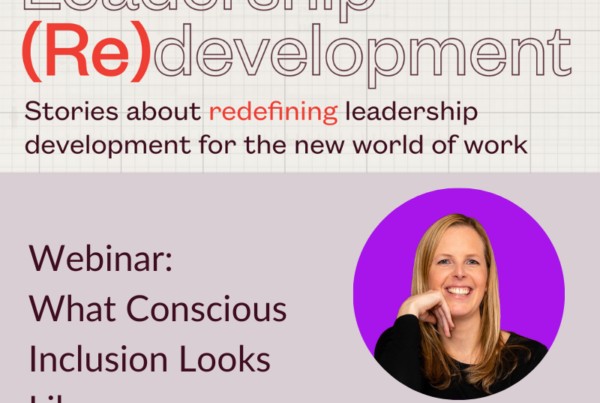What is a Coaching Culture?
A quick search will turn up a variety of definitions, but we like to refer back to a description from academic literature: It’s a culture where employees and managers all take a similar approach (coaching) to develop and interact with others—one where they prioritize helping other people grow in the context of work.
A coaching culture is one of those rare ideas that both sounds nice in theory and works in practice. According to one meta-analysis that looked at the influence of coaching on organizations, when managers received coaching, people on their teams were more likely to be satisfied with their jobs, more engaged at work, and less likely to consider leaving. Companies that have built successful coaching cultures help their employees unlock their potential, specifically enabling them to be more adaptable and agile.
In a study titled, The Future of Coaching, conducted by RedThread Research and licensed by Torch, we explore the ways in which coaching is exploding across industries, and with it the idea of a coaching culture.
Coaching culture has risen in popularity over the last several years as companies are shifting from a solitary focus on learning culture–one more focused on skills attainment and knowledge development through in-person and virtual training–to one centered around coaching. On the surface, it makes sense for an organization to pursue, invest-in, and value building a learning culture; however, it has challenges. The primary challenge of a learning culture is that it focuses on hard skill training rather than the skills needed to drive behavioral change, which support sustainable improved performance.
As employees focus more on their individual growth and self-development, they are proactively seeking out opportunities to grow from within. This fits perfectly within the model of a coaching culture and is a core reason why a coaching-based culture has taken off.
Why is a coaching culture important?
Organizations that have adopted a coaching culture have already reported seeing the benefits of making the shift. In fact, adopting a coaching culture is not only good for employees but also from a business perspective as well.
A report titled, Global Leadership Forecast 2018, found that organizations that engage in coaching were able to promote from within more readily than organizations that did not. These organizations already had a strong pipeline of internal talent, thereby helping to lessen the impacts of employee turnovers, and creating financial savings for the organization.
Additionally, organizations with coaching cultures also report:
- Increases in:
- Employee engagement
- Collaboration in the workforce
- Responsibility in employees
- Creativity and Agility
- Development of people
- Improved performance of people and teams
- Newly formed change management capabilities.
Organizations that have coaching cultures are especially beneficial for high potential employees (HiPos). Research shows that HiPo employees work 21% harder and have a 75% higher likelihood of success than their non-HIPo colleagues.
To learn more about the benefits of coaching for high-potential employees, , check out our blog post, titled 4 ways coaching and mentoring benefits high-potential employees.
How Can You Build a Coaching Culture?
The key way to build a coaching culture is to start with a series of questions:
1) How will a coaching culture help us reach our organizational goals?
Like any big change, achieving buy-in is critical. That includes buy-in from senior leadership because the prioritization, investment, and awareness-building for these types of initiatives typically starts at the top. This is because historically coaching has been reserved for top leadership/management. Only recently have we started to coaching leveraged more broadly, benefitting broader strategic groups within organizations.
Additionally, you’ll need to be very clear about what you’re trying to accomplish, and tie the goals of coaching to larger organizational goals. Often, organizational leadership is focuses on the financial benefits of a program or strategy. If you’re able to show how the ripple effect of coaching reduces turnover and increases employee engagement and performance, you’ll be able to create a solid business case for coaching that also aligns with senior leadership’s goals.
2) Who will have access to coaching and what form of coaching is the most appropriate for your organization?
There are multiple different types of coaching that exist in the market today. Here are just a few:
-
- Executive coaching
- High-potential coaching
- New manager training
- Career coaching for all employees
- Group coaching
- Drop-in coaching
The type of coaching you select should be influenced by your goals and then outcomes you’re hoping to achieve. In addition to deciding the type of coaching that’s right for your organization, it’s important to understand who your organization would like to select to participate in a coaching program. Other factors to consider include one’s budget and implementation cost of adopting such a program.
3) How will we build coaching into the culture?
Incorporating a coaching mindset has some common considerations and is also unique to each organization. Like any change, the norms, expectations, and pre-existing systems and processes of the organization affects the successful rollout and adoption. Things like how an organization trains their leaders, the expectations of senior managers and managers, and an organization’s performance management KPIs will affect how you communicate the investment in coaching and drive its adoption throughout the organization. For example, what might work at a company like Apple, may not work at a company like Amazon. To be successful, you need to understand what is inherent about your own culture and work with it, not against it.
4) How do we get critical mass to ensure that we’re building a coaching culture?
Your leadership needs to model the change they expect to see in their teams and across the organization. Involving your senior leaders is one key way to drive awareness and adoption. By signaling both the behavior and communicating the investment, senior leaders empower participants and the managers of participants to truly invest the time and embody the learning.
In addition to modeling and creating an expectation for participation, a dedicated budget for ongoing coaching programs is critical. Organizations looking to see the benefits from a coaching culture and the ripple effect need to be able to invest in it over time. Coaching can be focused and defined, but the long-term, scaled benefits aren’t realized in a short or limited engagement.
5) How are we going to measure success and/or impact?
Traditionally, it’s been hard to measure the true impacts of coaching across an organization, but that’s no longer true. There are multiple ways to understand the impact of your coaching program and culture. The Kirkpatrick Model is an effective framework for many of the L&D leaders. In this simple model, you track program effectiveness at four levels, as shown in the graphic.
As you move up the model, the changes become more challenging to measure, but also more impactful and more helpful in convincing others of the value of leadership development programs.
With a leadership coaching platform, like Torch, you can easily gain insight into Level 3- Behavior Change measurements. One way that we can share that information is by leveraging 360 data. A 360 assessment is a tool rooted in behavioral science and is designed to provide learners with insights to support their development as leaders. By collecting feedback from a range of sources—peers, direct reports, managers, etc.
In one example, a healthcare organization looked at employee engagement and 360 data. The company then performed this 360 assessment and asked if these individuals were changing in a positive way to justify the coaching.
How to Overcome Coaching Culture Obstacles
Building a coaching culture can be a challenging but rewarding process. Some of the common obstacles such as lack of leadership support, lack of resources, resistance to change, and lack of coaching skills, prevent a coaching culture from coming to life and thriving.
Below is a deep dive into these challenges and how to overcome them:
- Lack of leadership support: Educate leaders on the benefits of coaching and the impact it can have on employee performance and engagement. Share case studies and success stories from other organizations, and provide training for leaders to help them develop their own leadership coaching skills.
- Lack of resources: Look for ways to start small, and build over time. Can you find a spot in the business to run a pilot? Demonstrate success and then ask for more investment? Additionally, consider making coaching a part of employee development plans and budgeting for coaching as a necessary expense.
- Resistance to change: it is important to create a safe and supportive environment for coaching. Emphasize that coaching is not about criticism, but rather about helping employees develop their skills and achieve their goals. Encourage managers and coaches to ask questions and listen actively, rather than imposing their own ideas or solutions.
- Lack of coaching skills: provide training and development opportunities for coaches and managers. This can include formal training programs, coaching certifications, or informal peer coaching and mentoring. Additionally, provide ongoing support and feedback to help coaches and managers improve their skills over time.
Ways Leaders Can Foster a Coaching Culture
The key way that a leader can foster a coaching culture is by being a coachable leader themselves.
Here are a few ways to become a coachable leader:
- Be open to feedback: The first step to becoming a coachable leader is to be open to receiving feedback from others. This means actively seeking out feedback from your team, peers, and mentors, and being receptive to what they have to say.
- Develop self-awareness: Self-awareness is an essential trait for a coachable leader. This means taking the time to reflect on your own strengths and weaknesses, and being honest with yourself about where you need to improve.
- Set goals: Once you have identified areas where you need to improve, it is important to set goals for yourself. This could include specific skills you want to develop, or behaviors you want to change.
- Seek out a coach: Working with a coach can be a powerful way to become a more coachable leader. A coach can provide you with objective feedback, help you develop new skills, and hold you accountable for achieving your goals.
- Practice active listening: One of the most important skills for a coachable leader is active listening. This means fully focusing on what the other person is saying, asking questions to clarify their point of view, and avoiding the temptation to interrupt or offer your own solutions too quickly.
- Be willing to learn: Finally, a coachable leader is someone who is willing to learn and grow. This means being open to new ideas and perspectives, seeking out learning opportunities, and being willing to take risks and try new things.
Tips to Start Building a Coaching Culture Today:
- Define what a coaching culture means to your organization: The first step is to define what a coaching culture means to your organization. This involves identifying the key values, behaviors, and practices that support coaching, and communicating these to your team.
- Create a coaching strategy: Understand how coaching can uniquely support your people or leadership development goals and help your organization achieve its goals.
- Strategically (and transparently) select participants:To build a coaching culture, create an equitable, formal, and transparent selection process. This process will ensure that your coaching program has healthy engagement, a strong ROI and inclusive representation, but also that your participants are able to turn around and demonstrate their newly learned skills with others. This extension of the impact of coaching is the coaching ripple effect and a strong way to build a coaching culture.
- Practice active listening and giving feedback: Start building a coaching culture by integrating common coaching practices into the day-to-day flow for your managers and teams. Active listening–listening without distraction, and listening and looking for the feelings and non-verbal cues–and demonstrating giving and receiving feedback regularly (versus saved for a review) will build habits that support a coaching culture.
- Create a safe and supportive environment: Coaching works best in a safe and supportive environment, where employees feel comfortable sharing their challenges and goals. This means actively supporting a growth-mindset , where employees feel supported and encouraged to take risks and trust that they will learn from their mistakes.
- Celebrate success and share best practices: To build a coaching culture, it’s important to celebrate success and share best practices. This means recognizing and rewarding coaches and employees who have achieved their goals through coaching, and sharing success stories across the organization.
- Measure and track progress: Finally, it’s important to measure and track progress in building a coaching culture. This means setting metrics and goals for coaching, tracking progress against these goals, and using this information to continuously improve and refine your coaching culture.
By following these steps, you can build a coaching culture that supports your employees, develops their skills and capabilities, and helps your organization achieve its goals. Remember, building a coaching culture takes time, effort, and commitment, but the benefits are well worth the investment.
Helpful Coaching Culture Resources
Building a coaching culture doesn’t happen overnight, here are a few resources from Torch that can help you with defining, building and scaling a coaching culture today:
- Torch Coaching 101
- Blog: The future of people development: Using coaching to build culture
- Blog: Creating a leadership culture through leadership development programs
- Guide: How to Build a Coaching Strategy-Chapter 1
- Guide: A Buyer’s Guide for Leadership Coaching Platforms
- Report: Leveraging Coaching and Mentoring to Create More Effective Leaders
- Webinar: Creating a Coaching Culture within Your Organization


